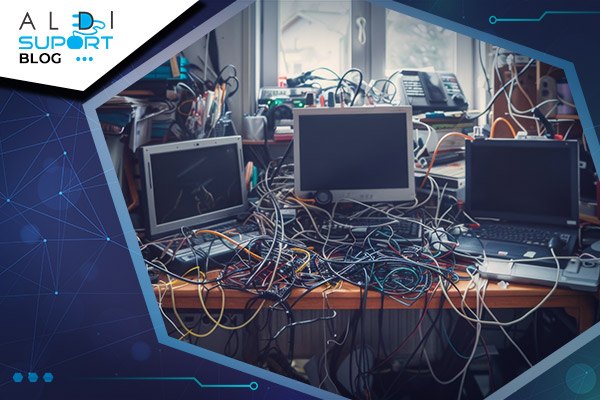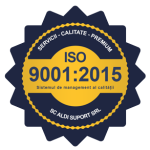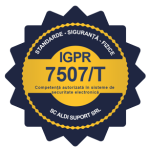Hey there! We all know that IT equipment is the backbone of any business’s daily operations. Computers, servers, printers, and other devices are essential for productivity and efficiency. But to get the most out of these tools, it’s crucial to manage and maintain them properly. In this article, we’ll explore the best practices for managing and maintaining your IT equipment, ensuring your devices run at peak performance and last longer.
Planning and Inventorying IT Equipment
The first step in efficiently managing IT equipment is proper planning and inventorying. It’s essential to keep a clear record of all IT devices and components within your organization.
Creating a Detailed Inventory
A detailed inventory should include information such as:
- Type of Equipment: Computers, servers, printers, etc.
- Model and Specifications: To know exactly what resources you have.
- Serial Numbers and Purchase Dates: To track warranties and replacement cycles.
- Physical Location: To know where each piece of equipment is located.
- Responsible Users: Who uses the equipment and who is responsible for its maintenance.
Asset Management Software
Using IT asset management software can simplify this process significantly. This type of software allows for constant updating and monitoring of the inventory, ensuring that information is always accurate and up to date.
Preventive Maintenance
Preventive maintenance is key to avoiding breakdowns and extending the life of your IT equipment. This involves carrying out regular maintenance activities to prevent problems before they occur.
Regular Cleaning
Dust and dirt can cause hardware components to overheat, leading to decreased performance and failures. Make sure your IT equipment is cleaned regularly:
- Internal Cleaning: Use compressed air to remove dust from inside computers and servers.
- External Cleaning: Wipe down the exteriors of equipment regularly to prevent dirt buildup.
Software and Firmware Updates
Keeping software and firmware up to date is crucial for the security and performance of IT equipment. Ensure all devices run the latest versions:
- Security Patches: Install security patches promptly to protect equipment from vulnerabilities.
- Firmware Updates: Check and update device firmware to benefit from performance and security improvements.
Proper Storage and Backup Management
Efficient storage management and regular backups are essential for data protection and ensuring business continuity in case of hardware failures.
Organizing and Monitoring Storage
Ensure all data is stored in an organized manner and that storage space usage is constantly monitored:
- Directory Structure: Create a well-organized directory structure to facilitate data access and prevent loss.
- Storage Monitoring: Use monitoring software to track storage space usage and quickly resolve any storage issues.
Regular Backups and Redundancy
Perform regular data backups and ensure they are stored in redundant locations to prevent data loss due to hardware failures or cyber attacks:
- Automatic Backups: Use automatic backup software to ensure all data is regularly copied without relying on manual intervention.
- Redundant Storage: Keep backups in separate physical locations or in the cloud to protect against data loss from natural disasters or hardware failures.
Training and Educating Users
Users of IT equipment play a crucial role in its maintenance. It’s essential that they are well-informed and trained on the best practices for using and maintaining equipment.
Training and Usage Procedures
Provide regular training for employees and create clear procedures for using IT equipment:
- Usage Instructions: Ensure all users know the correct procedures for using equipment to prevent misuse and failures.
- Security Training: Provide security training to educate users about risks and the protective measures they should take.
Reporting Issues
Encourage users to report any problems they encounter with IT equipment promptly for quick and efficient resolution:
- Ticketing Systems: Use a ticketing system to manage and track the reporting and resolution of IT issues.
- Constant Feedback: Solicit feedback from users to identify and address recurring problems.
Monitoring and Evaluating Performance
Constant monitoring and evaluation of IT equipment performance are essential to ensure optimal operation and quickly identify any potential issues.
Using Monitoring Software
Use monitoring software to track IT equipment performance and detect and resolve problems before they become critical:
- Resource Monitoring: Track resource usage such as CPU, RAM, and storage space to identify and eliminate bottlenecks.
- Proactive Alerts: Set up alerts to be notified immediately of performance issues or system errors.
Periodic Performance Evaluation
Regularly evaluate IT equipment performance to identify improvement opportunities and plan for replacing outdated equipment:
- Performance Audits: Conduct regular performance audits to assess the condition of equipment and plan preventive maintenance.
- Replacement Plans: Develop replacement plans for outdated equipment to ensure all devices operate at peak capacity.
Conclusion
Effective management and maintenance of IT equipment are essential for optimal performance and extending the lifespan of your devices. By implementing the best practices outlined in this article, you can ensure your IT equipment runs smoothly and your business remains productive and efficient. From planning and inventorying equipment, preventive maintenance, and managing storage and backups, to training users and monitoring performance, every aspect contributes to maintaining a robust and reliable IT infrastructure.
Întrebări frecvente
Why is IT equipment inventorying important?
Inventorying IT equipment is essential to keep a clear record of available resources, track warranties and replacement cycles, and efficiently manage maintenance.
How can I prevent hardware failures?
Perform regular preventive maintenance, clean equipment periodically, and update software and firmware. Monitor performance to detect issues before they become critical.
What role do users play in IT equipment maintenance?
Users play a crucial role by using equipment correctly, reporting issues promptly, and following security procedures.
How can I ensure data security in case of hardware failures?
Perform regular backups and store them in redundant locations. Use automatic backup software to ensure all data is protected against loss.
What tools can I use to monitor IT equipment performance?
There are numerous monitoring tools like Nagios, Zabbix, and SolarWinds that provide valuable insights into resource usage and IT equipment performance.
Why are software and firmware updates important?
Software and firmware updates improve performance, fix security vulnerabilities, and ensure compatibility with new technologies, contributing to the optimal functioning of IT equipment.





